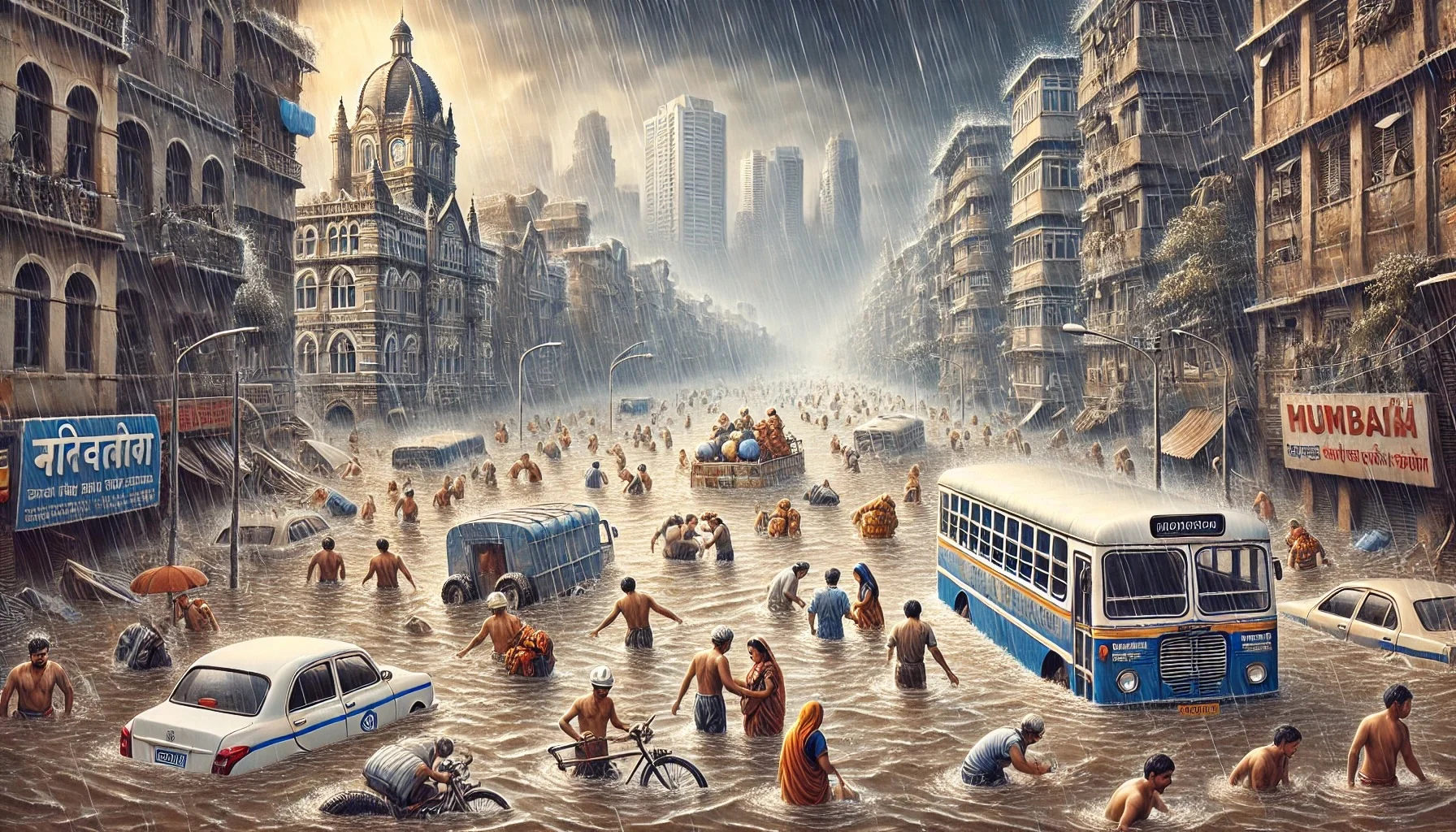
The Maharashtra Floods of 2005
by: The Calamity Calendar Team
July 26, 2005
The Calm Before the Storm
Mumbai, a city that never sleeps, was bustling as usual on the morning of July 26, 2005. The monsoon rains had been falling steadily, a familiar scene for the city’s residents. However, this day was destined to be different. By noon, the rainfall intensity began to increase significantly, signaling the start of an unparalleled natural disaster.
A Deluge Unleashed
By 2:00 PM, the city was witnessing an extraordinary downpour. Over the next two hours, Mumbai recorded an astonishing 944 mm (37.17 inches) of rain within 24 hours, the heaviest downpour ever recorded in India. Streets transformed into rivers, railway tracks vanished under torrents of water, and the city’s drainage system, already under strain, collapsed entirely.
By evening, the situation had escalated into a full-blown crisis. Water levels rose rapidly, flooding homes, businesses, and vital infrastructure. The sprawling urban landscape of Mumbai, home to millions, was submerged. The transportation network, including the iconic local trains, ground to a halt, leaving countless people stranded.
The Night of Terror
Thanks for subscribing!
As night fell, the true horror of the situation unfolded. Entire neighborhoods were under water. People found themselves trapped in their offices, schools, and vehicles. Emergency services were stretched thin, struggling to respond to the overwhelming number of distress calls. The power supply was disrupted, plunging large parts of the city into darkness.
Amidst the chaos, stories of human endurance and solidarity emerged. Strangers came together to offer shelter, food, and comfort to those in need. Social media and local radio stations became lifelines, disseminating crucial information and connecting people with rescue services.
The Aftermath
The aftermath of the Mumbai floods was devastating. The official death toll reached 1,094, with victims succumbing to drowning, electrocution, and landslides triggered by the floods. Thousands more were injured, and many were reported missing. The economic impact was equally severe. The city’s property damage was estimated at approximately $1.2 billion USD. Businesses suffered enormous losses due to the prolonged disruption.
Infrastructure across Mumbai bore the brunt of the disaster. Roads, bridges, and railway tracks were extensively damaged. Essential services like electricity, water supply, and telecommunications were severely affected, exacerbating the crisis.
The Response
In the face of such unprecedented disaster, the response from various agencies was swift. The municipal authorities, state government, and central government mobilized all available resources for relief operations. The Indian Armed Forces played a crucial role in rescue efforts, navigating the flooded streets to reach stranded residents. Emergency shelters were established to house displaced individuals, providing them with basic necessities and medical care.
Long-term recovery was a formidable challenge. The government launched extensive rehabilitation programs to assist affected families and rebuild the damaged infrastructure. One significant outcome of this disaster was the passing of the Disaster Management Act, 2005, which led to the creation of the National Disaster Management Authority (NDMA) in India. This body was tasked with improving disaster preparedness and response across the country.
Lessons Learned
The Mumbai floods of 2005 were a wake-up call for urban planners and policymakers. The disaster underscored the urgent need for better urban planning and robust disaster management strategies. Subsequent studies and reports analyzed the causes and impacts of the floods, leading to significant changes in Mumbai’s urban planning.
Efforts to upgrade the city’s drainage system were undertaken, and new measures were implemented to mitigate flood risks. Early warning systems were enhanced, and public awareness campaigns emphasized the importance of disaster preparedness. However, despite these improvements, Mumbai continues to face challenges related to heavy monsoon rains and waterlogging.
A Legacy of Resilience
The 2005 floods remain etched in the collective memory of Mumbai’s residents. It serves as a stark reminder of nature’s unpredictable fury and the importance of resilience and preparedness. The disaster brought out the best in the city’s spirit, with countless acts of bravery and kindness lighting up the darkest hours.
Mumbai has since made strides in improving its infrastructure and disaster management capabilities. Yet, the lessons from that fateful day continue to shape the city’s approach to handling natural disasters. The monsoon rains will always be a part of Mumbai’s identity, but so too will be the resilience and solidarity of its people.
Stay in the Loop!
Become a Calamity Insider and get exclusive Calamity Calendar updates delivered straight to your inbox.
Thanks! You're now subscribed.